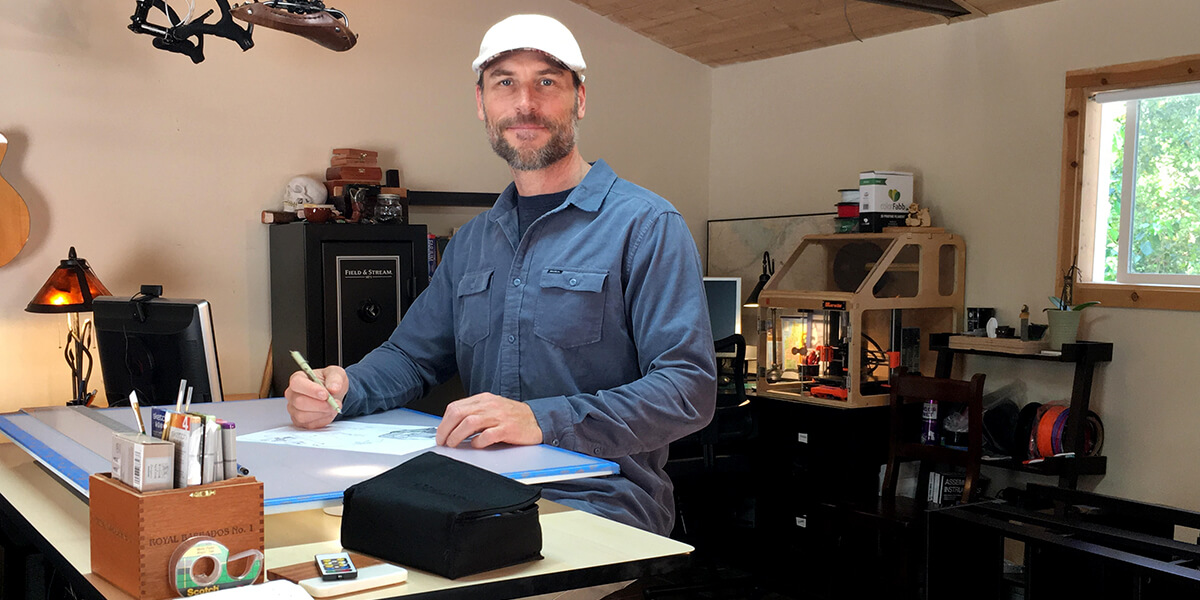
Graduate student Jason Appler discovered his passion for product design in an unlikely place: an administrative office in the National Oceanic and Atmospheric Administration (NOAA). He has experienced the thrills of traveling through dangerous waters as a commercial fisherman in Alaska and as a NOAA Corps officer. But design theory is what motivates him now.
Iterative problem-solving processes based in design theory have become all the rage at leading companies and universities worldwide. Appler first utilized them when working as a strategic planning lead in NOAA’s Office of Performance, Risk and Social Science. The office doesn’t make products, but uses design theory to help the agency’s leadership plan effective policy. Appler says it helps disparate groups of people think creatively as a group and step outside of their box.
“It’s the same process when you develop an app or widget,” says Appler, who holds a bachelor’s degree in biology from Villanova University and an MBA from the Naval Postgraduate School. “You feel the pain of the person who has the problem. You keep reiterating until you find a strong solution.”
You feel the pain of the person who has the problem. You keep reiterating until you find a strong solution.” — Jason Appler
Appler recently won the Jerry Streichler Scholar Award from the western U.S. region of Epsilon Pi Tau, an international honor society for design and technology. He received the award at the society’s 90th anniversary board and trustee members conference in September in Orlando, Florida.
“Jason demonstrates great capacity for leadership. He has a certain humbleness about himself,” said Design Professor Ricardo Gomes, who serves as trustee for SF State’s Beta Beta chapter of Epsilon Pi Tau. “He exemplifies a mantra that I use often: Design with us, not for us. He represents that collective, inclusionary approach to design, getting the best attributes of his team and adopting them in a collaborative, cohesive manner. ”
At SF State, Appler has used his leadership skills and design-theory experience to tackle numerous problems. Last year he founded the Design Guild, a student-run organization for professional development. He also led a team of students creating an online platform that connects youth volunteers with senior citizens. The project was a finalist in the Stanford Center on Longevity Design Challenge. For his thesis, Appler has designed an efficient kitchen system for adults living in shared home environments.
“The beauty of the Design M.A. program at San Francisco State is that it provides a strong foundation in the theory and process,” he said. “By going here, I have a stronger foundation to give me flexibility in my future pursuits.”
— Matt Itelson